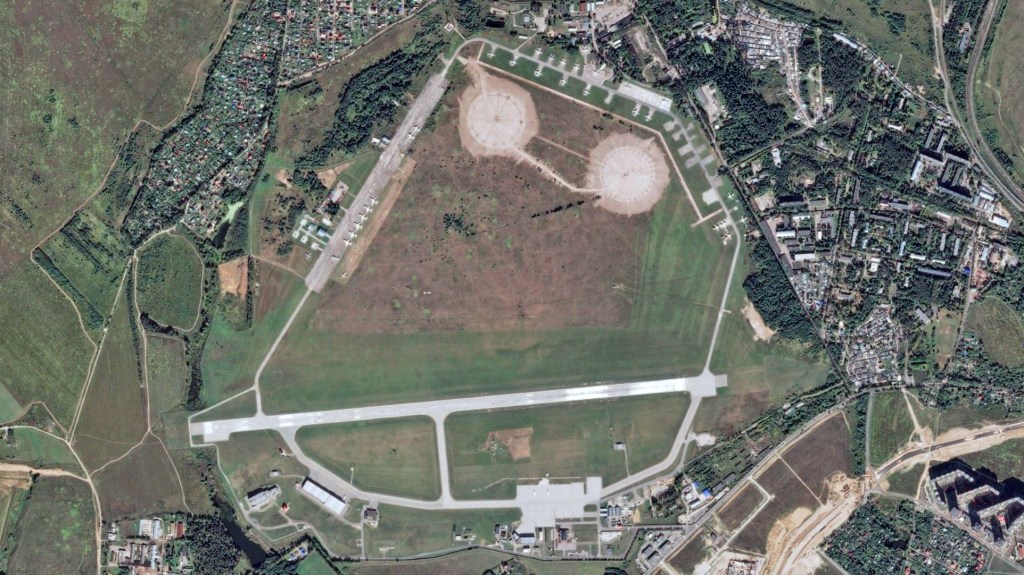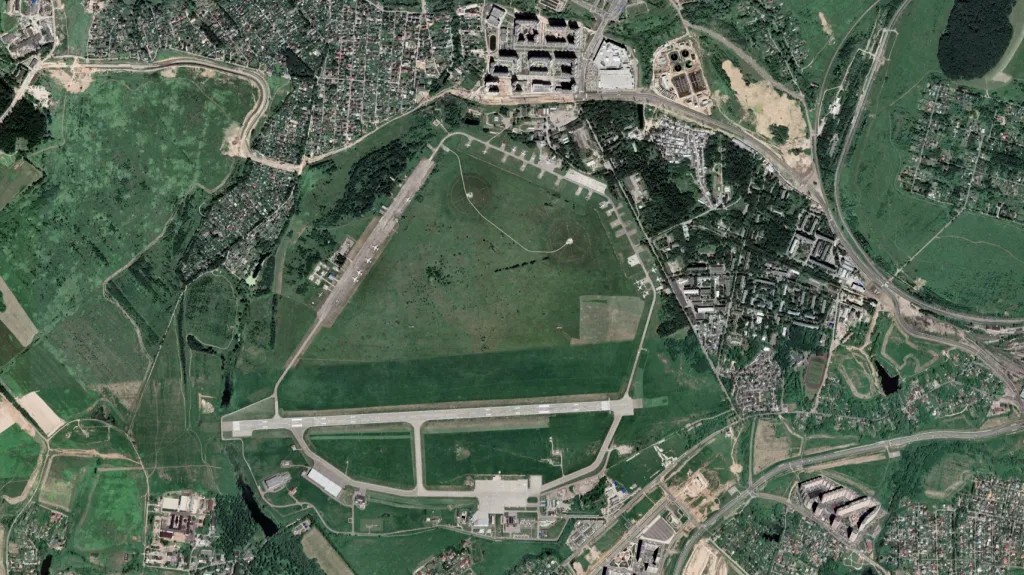The head of Ukrainian intelligence told The War Zone that his agency carried out drone attacks on a signals intelligence center and airport near Moscow and a Russian airbase in the Rostov region. In addition, video emerged on social media showing an unsuccessful drone strike near the Olenya Air Base in Murmansk, home of Russian strategic bombers in the Arctic Circle about 1,200 miles from Ukraine.
“We conducted a couple of drone operations today,” Lt. Gen. Kyrulo Budanov, head of the Ukrainian Defense Intelligence Directorate (GUR), told The War Zone.
In addition to the attack on the signals intelligence center, GUR also conducted drone strikes on the Ostafyevo airport in Moscow as well as the Millerovo air base in the Rostov region. In total, about 50 drones were used, Budanov said.
The extent of the damage, if any, at the target locations is unclear at the moment.
“We are checking now,” Budanov told us.
Ostafyevo airport serves multiple purposes for the Russian MoD, but in 2018 a pair of massive circular antenna arrays were constructed there giving the installation an overt strategic signals and/or communications mission. It’s also possible another signals intelligence center at or near the airport, or in the Moscow region overall, was hit instead.

The latest data collected by NASA’s Fire Information for Resource Management System shows no fires at either Ostafyevo or Millerovo. Budanov did not specify where the signals intelligence center is located.
Russian officials say they shot down all the drones heading to Moscow as well as other regions in the country.
“Over the past night, during an attempt by the Kyiv regime to carry out a terrorist attack using unmanned aerial vehicles on targets in the territory of the Russian Federation, 45 aircraft-type UAVs were destroyed by air defense systems on duty,” the Russian Defense Ministry (MoD) said on Telegram. The MoD added that “11 UAVs were destroyed over the territory of the Moscow region, another 23 UAVs were destroyed over the Bryansk region, six UAVs were destroyed over the territory of the Belgorod region, three over the Kaluga region and two over the Kursk region.”
This was one of the largest drone attacks on Moscow, said the city’s mayor.
“The layered defense of Moscow against enemy UAVs that was created has allowed us to successfully repel all attacks,” Sergei Sobyanin said on Telegram. “The Defense Ministry’s air defense forces shot down 10 of them tonight. This is one of the largest attempts to attack Moscow with drones ever. We continue to monitor the situation.”
Budanov also told us that a previous Ukrainian drone attack on a Russian airfield resulted in the destruction of a MiG-31 Foxhound interceptor and two Ilyushin Il-76 Candid transport aircraft in an attack on the Savasleika Air Base about 400 miles northeast of Ukraine on Aug. 16. At the time, we reported that the base had been hit by around 10 drones. Video showed a drone’s fiery impact, seemingly close to the flight line (evidenced by the distinctive tail of a Candid).
Savasleyka is a Long-Range Aviation base, with a primary offensive mission, using Foxhounds adapted to carry the Kinzhal air-launched ballistic missile, a weapon that has seen sporadic use in the war in Ukraine.
All the target areas attacked overnight have been attacked before.
Moscow has been targeted by Ukrainian drones, including an attack on the Kremlin in May 2023.
The Millerovo Air Base was most recently attacked in July.
Satellite imagery obtained by The War Zone from that attack showed some damage was inflicted, though the extent was unclear.
The airfield, located less than 20 miles from the border with Ukraine, is home to Su-30SM Flanker multi-role fighter of the 31st Fighter Aviation Regiment as well as Su-35 Flanker-E fighters. The base has come under attack before, beginning just after the start of the all-out invasion.
Ostafyevo airport in Moscow was attacked in April. At the time, the GUR published footage claiming to show a Russian Ka-32 helicopter being set on fire at Ostafyevo. The Ka-32 is not operated by the Russian military, but examples are flown by the Russian Ministry of Emergency Situations and other state organizations.
According to GUR, the Ka-32 was targeted while it sat at the airfield of Ostafyevo. The spy agency claimed that the airfield is jointly operated by the Russian Ministry of Defense and Gazpromavia, the airline of the Gazprom company.
In addition to the drone attacks mentioned by Budanov and the Russian MoD, a drone was shot down near the Olenya Air Base in Murmansk. It’s home to Tu-22M Backfire bombers and serves as a staging location for Tupolev Tu-95MS Bear-H bombers, which have been launching long-range missiles against Ukraine since the beginning of the all-out war.
“An aerial threat of drone use has been detected in the Murmansk region,” Murmansk Gov. Andrei Chibis said on Telegram. “All necessary measures to improve security have been taken.”
The drone appears to be a converted light aircraft, something you can read more about here. It was shot down over Vysokii (Olenegorsk-2), a small military town located next to Olenya, according to the Barents Observer. The video below shows it flying low over the area, drawing massive fire until it explodes in a ball of flames.
Olenya was previously attacked last month. GUR reportedly damaged a Backfire bomber there, according to Ukrainian Pravda. The extreme distance involved with such an attack underlines Ukraine’s suicide drones’ growing reach.
Budanov offered more details about the drone strikes on Moscow.
Ostafyevo “was a deceptive target,” he said. “It’s an airfield for transport aviation.”
The signals intelligence center is located in the Podolsk District of Moscow, he explained, which is about five miles south of the airfield.

